Design of Tarmac Surface Heat Collector for Central District Water Heating and Supply.System
Info: 12818 words (51 pages) Dissertation
Published: 11th Dec 2019
Tagged: Environmental StudiesTechnology
Table of Contents
2.2.1 Concrete Pavements and Mixes
2.2.2 Asphalt Pavements and Mixes
2.3 Tarmac surface thermal behaviour
2.4 Factors Affecting Thermal Conductivity
2.4.1 Aggregate type and content
2.4.5 Pavement Heat Collector Systems
2.4.6 Applications and Design Considerations
2.5.1 High Thermal Conductivity Aggregates.
2.5.5 Geometrical And Working Parameters
4.2.2 Average hot water consumption per day
4.3.1 Comparison Of Different Material Properties
4.3.2 Effect Of Changing Pipe Diameter
4.3.3 Effect Of Changing Pipe Spacing
4.3.4 Effect Of Changing Fluid Velocity
4.3.5 Effect Of Changing Pipe Depth
4.3.7 Finite Element Result Analysis
5 CONCEPT GENERATION AND DESIGN
5.3.1 Quality Function Deployment
5.6 Energy That Can Be Harvested From The Tarmac Surface
5.6.1 Ridgeview roads Tarmac surface area
5.6.2 Solar radiation absorbed by pavement
5.6.3 Thermal radiation emitted by the asphalt
5.6.4 Thermal radiation absorbed from the atmosphere
5.6.5 Total energy that can be harvested
5.6.6 Energy required to raise water by 20 degrees Celsius
5.6.7 Actual energy that can be harvested
5.6.8 Heat conduction through the pavement
5.6.9 Heat conduction through the pipe
5.6.10 Heat convection between water and pipe
5.6.11 Heat convection between the pavement surface and the ambient
5.7.2 Hot water usage allocation
5.7.3 Maximum Water Demand/day
5.7.5 Collector Pipe length that can be installed
5.7.6 Total length of collector pipes (
According to Asaeda et al. (1996) the larger the diffusivity, the faster the propagation of heat into the medium. A small value of thermal diffusivity means that heat is mostly absorbed by the material and a small amount of heat will be conducted further. Mrawira and Luca (2002) set up an experiment to determine the thermal diffusivity of pavements and the prediction could be made from the following equation
i= time node
m=depth node
2.4.4 Thermal Effusivity
In 1983 tom Duncan stated that thermal Effusivity (β), refers to the ability of a material to transfer heat to and from the surrounding areas. It can also be termed coefficient of heat storage, the equation below can be used to calculate thermal Effusivity of a material.
Where,
β=thermal effusivity (J/S0.5m2K
)
A large value of thermal Effusivity indicates both large storage capacity and efficient heat
transfer.
2.4.5 Pavement Heat Collector Systems
Wu et al. (2011) stated that a maximum of 70°C can be achieved by the tarmac pavements in summer because of abundance of solar irradiation and excellent absorbing properties of tarmac. In 2003 de Bondt outlined that heat energy that is taken up by the tarmac surfaces can be gathered by the use of pipes called loops that are embedded beneath the pavements. (Carder et al.2007) further added that the absorbed heat can be used for many different applications including de-icing roads, provide hot water or converted to electricity using the thermos electric generator. (Mallick et al. 2009; Wu et al. 2011). Made it clear that the reduction in temperature from the surface of pavements would lower the urban heat island (UHI)
2.4.6 Applications and Design Considerations
Turner (1986; 1987) studied, theoretically, the performance of a pavement heat collector lower temperatures of maximum 15°C and higher temperature of 70°C for applications like de-icing roads, provide hot water or converted to electricity using the thermos electric generator He concluded that from his results it was possible to apply this technology in the stated applications. Nayak et al. (1989) did experimental studies on collecting solar energy from embedded PVC tubed under a painted black concrete roof top. They presumed that solar powered collectors can be implemented for use in homes as a way of reducing water heating costs.
Chaurasia (2000) contemplated the execution of a solid sun oriented authority by setting out a system of aluminium loops to provide hot water for use in homes. The conclusion was that at a solar radiation conditions of 650 W/m2 and air temperature of 27°C a range of 36°C and 58°C outlet can be achieved. Hasebe et al. (2006) worked on a project that utilizes thermoelectric generator and the temperature difference between warm inlet water and cold water as supplied from external source.
Mallick et al. (2009) examined tarmac surfaces for utilizations of collecting vitality and lessening the UHI impact. They hypothetically demonstrated that close surface air temperature could be lessened as much as 10°C by running water through the implanted loops put at around 40 mm under the asphalt. Also, they played out a little scale research facility testing on black-top asphalt tests. Their outcomes demonstrated that dark acrylic paint on the tarmac surface and supplanting limestone aggregates with aggregates containing high rates of quartz could expand the proficiency of the system by half and 100%, respectively. Wu et al. (2011) showed that running water in pipes could reduce the surface temperature of the pavements hence provided evidence of considerable heat absorption of water see Figure 2:3).
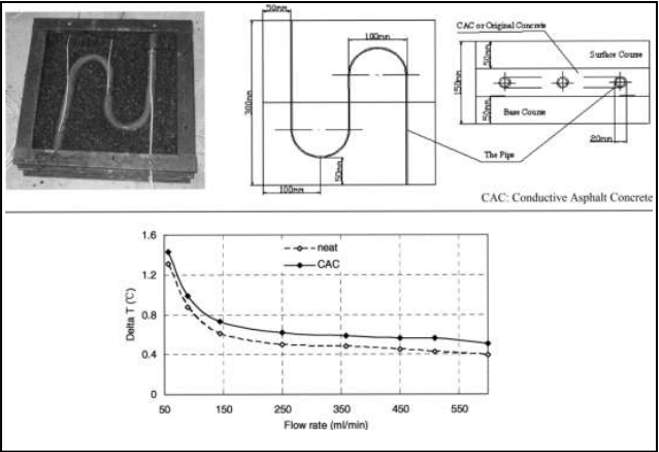
Figure 2:3 tested asphalt slabs (top) and temperature rise as a function of flow rate (bottom) for normal and conductive asphalt slabs, adapted from (wu et al. 2009)
Wu et al. (2009) also said that application of graphite could raise the outlet water temperature of tarmac surfaces see Figure 2:3 . However, they understood that long loops and a bigger zone of heat exchange is important to gain a significant temperature rise. Moreover, the lubricant impact of graphite may negatively affect the mechanical execution of tarmac surfaces.
2.4.7 Design Considerations
In 2017 Richard W. and Bonds, P.E showed some relation between the truck load and their effect on the pipes buried at shallow depths. The procedure for coming up with the load is provided in ANSI/AWWA standard C150/A21.50. The equations shown below were taken from these standards.
Truck load (
Pt N/mm2)
Pt=RF×CPbD
Where
Pt = Truck load in pounds per square inch
R = Reduction factor (see appendix 4 C150/A21.50). The reduction factor considers the load from the wheel which is taken by the pipe that is directly below it but the pipe is assisted in carrying the load by the distribution of the load due to the top layer of the tarmac causing other adjacent pipes to carry part of the load.
F = Impact factor =1.5 (ASCE Manual No. 37)
C = Surface load factor gives the relation of load distribution from the surface through the soil to the pipe. (C150/A21.50)
P = Wheel load (N) (for purposes of design, 16,000 lbs., for a single AASHTO H-20 truck on unpaved road or flexible pavement)
b = Effective pipe length of 36 inches
D = Outside diameter of the pipe in inches
Surface load factor (C).
=1-2πsin-1HA2+H2+1.52A2+H21.52+H2+2π1.5AHA2+H2+1.521A2+H2+11.52+H2
H = Depth of cover in meters
A = Outside radius of the pipe in meters
Stress at any known depth
σZ=3P2πH3R15
Where
σZ=
Vertical stress in pounds per square inch
P = Point load at surface in pounds
H = Depth in inches
R = Distance from the point load to the point at which the stress is to be determined in inches
2.4.8 Commercial Systems
According to de Bondt (2003), the application of pavement energy system has been constrained but there are some popularized frameworks which have been implemented successfully by Ooms Avenhorn in the Netherlands. The general outlook of the system is shown in Figure 2:4 below. The system makes use of buried loops which contain a heat absorbing liquid.
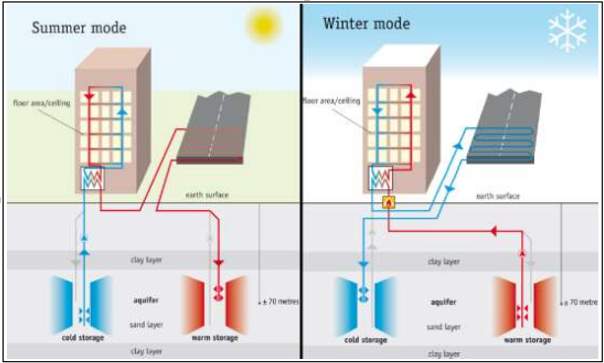
Figure 2:4 Road Energy System Innovated By Ooms Avenhorn Holding (De Bondt 2003)
In 2012 P.K.Dehdezi explained that in summer, low temperature water is pumped into the loops buried under the tarmac surface and begins to circulate. The heat being absorbed by the tarmac surface is then conducted to the loops/pipes buried thereby increasing the temperature of the liquid. The warm water can then be kept in a reservoir storage for later use (Figure 2:4).
Experiments have been conducted by the Ooms to determine the effects laying the pipes under the tarmac surface including the effects of compaction on the integrity of the pipes. According to Van Bijsterveld and de Bondt (2002) the insertion of pipes compromises the strength of the tarmac surface due to the stress concentrations close to the pipe. Bondt and his friends also engineered a way to prevent this effect, it makes use of the reinforcing grid that protects the pipes in three dimensions as shown in Figure 2:5 below. The structure protects also the pipes from concentrated stresses and compaction damage.
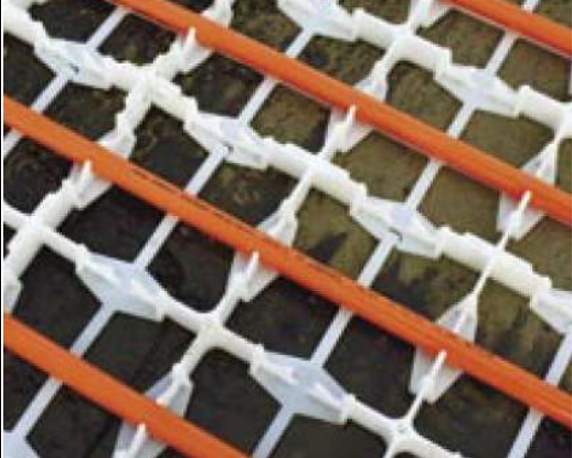
Figure 2:5 Three-Dimensional Reinforcing Grid Developed By Ooms Avenhorn Holding, Carrying Water Pipes Are In Red (De Bondt 2003)
In 2012 P.J Dehdezi pointed that a special type of bitumen polymer known as Sealoflex was developed to obtain a high quality tarmac blend to be used between the loops and the grid.
Sullivan et al. (2007), said that the system has been successfully implemented in the UK. IcaxTM Limited in the UK. This system absorbs energy from the upper installed pipes and it stores then in the lower installed pipes (see Figure 2:6). Carder et al. (2007)
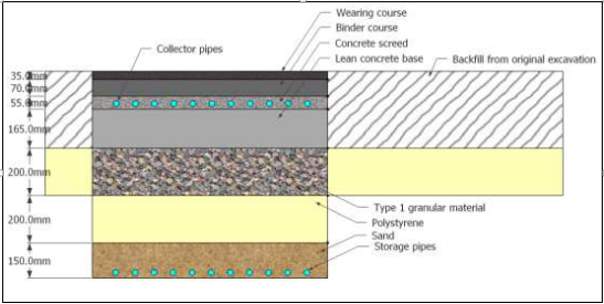
Figure 2:6 collector and storage system set up
Figure 2:7 Cross Section Of Collector And Storage Loops In The Icax System, Adapted Form (Carder Et Al. 2007)
2.5 Materials Selection
A wide range of heavy, light, normal and other aggregates, can be used to improve the thermos-physical properties of pavement energy systems. As well as were used to produce concrete and asphalt pavements that might deliver beneficial thermo-physical properties for the PESs. The effects of different combinations of material is analysed by different authors shown in the following paragraphs.
2.5.1 High Thermal Conductivity Aggregates.
Raising thermal conductivity by addition of additives as graphite or quartz has been done by or quartz. Hermansson A. (2000) carried out studies and showed that two samples one with and one without aggregates have different conductivities, the one with additives had better conductivity. In 2003 V. Bobes-Jesus et al said efficiency of the collector can be improved by the additives. In 2004 Mallick et al. managed to increase the conductivity in their attempt they added copper powder which has a high conductivity. As surface temperature decreases underground temperature increases with depth therefore increasing the thermal conductivity of material in by increasing thermal conductivity increases heat transfer process Wu S, Chen M, Wang H, Zhang Y .(2009).
2.5.2 Pipe material.
Because of their high conductivity metallic pipes can be used, however nowadays PVC pipes are most preferable in order to bypass the complications posed by metallic pipes such as corrosion. According to V. Bobes-Jesus et al.(2013) a material called radiant ONIX has conductivity 0.29 W m1 K1 only produced a slightly lower difference between highest temperature reached when it was compared to copper in an experiment signifying that cheaper materials than copper can be used.
2.5.3 Heat exchange fluid.
According to Hasnain SM in (1998), availability, low cost, effect on pipes, stability at the associated temperatures, high specific heat are the qualities required for a heat exchange fluid. He also said that water is the most suiting fluid but it is much better when mixed with anti-freeze to avoid solidification. Anti-freeze like Glycols are mostly associated with this application as they have high specific heat, low viscosity, moderate cost and ease corrosion control among many other properties commonly used antifreezes due to their moderate cost, high specific heat, low viscosity and ease of corrosion control Zwarycz K. (2002) and Wang H, Qi C (2008).
2.5.4 Surface coating.
According to Mallick et al. (2009). The behaviour of tarmac is such that it mimics the behaviour of a black body which high quantities of solar radiation but it also releases longwave thermal radiation at speedy rates. For this reason. By reducing the reflectivity of tarmac surfaces by means of applying a black paint the collector efficiency can be improved. However the rate of emission is still high.
2.5.5 Geometrical And Working Parameters
the following sub chapters points out the effect of some geometrical and design factors such as pipe depth, pipe arrangement, pipe spacing, flow rate, and pipe diameter, on tarmac solar collector functionality is examined.
2.5.5.1 Pipe diameter.
V.Bobes-jesus et al. (2012).reviewed that the flowing of the liquid depends greatly upon the diameter of the pipe. The thermal diffusivity decreases when the diameter increases under assumed constant flow as suggested by the Dittus-Boeltler correlation. Flow conditions depend strongly on pipe diameter.
2.5.5.2 Pipe spacing
If the number of pipes increase per area then heat absorption increases but the outlet temperature is decreased because of heat distribution, Bijsterveld WT et al, (2001). On the other hand if the spacing too low the efficiency of the collector is greatly reduced cool zone formations. The minimum spacing of the pipes depends upon the diameter of the pipe and the rate of flow. R.B Mallick et al. (2009). Also the economic consideration must not be ignored during selection of pipe spacing.
2.5.5.3 Pipe depth
There is an occurrence of thermal gradient in any tarmac surface as the distance from the surface increases. LTPP said that the maximum temperature of tarmac surfaces is at its highest at a depth of 20mm as measured from the surface of the tarmac due to the convection between the surroundings and the tarmac. The 20mm hence becomes most favourable for placement of pipes Chen B, Rockett L, Mallick RB. A. (2008). According to Loomans M, Oversloot H, and de Bont a, Jansen R, van Rij H. (2003). The distribution of pavement temperature tends to be unvarying as the depth of the pipes increases but the total amount of energy that the system is able to absorb from the surface reduces.
2.5.5.4 Pipe Arrangement.
According to V.Bobes-jesus et al. (2012). This plays a critical role in the performance of tarmac heat collectors yet no specific studies on the subject have been found in literature. They also said that there are two kinds of arrangements that are preferable namely parallel arrangement (PTC) and serpentine fashion arrangement (STC). Asphalt solar collector pipe arrangements have been found so, in this section conclusions obtained from studies on fluid mechanics of flat plate collectors are presented. According to Chiou JP. (1982) maintaining the same flow in pipes will increase the efficiency of the system otherwise 2% to 20 % of the heat may be lost. . Molero N, Cejudo JM, Dominguez F, Rodríguez E, Carrillo A. (2009). And Matrawy. (2009) showed by comparison that the serpentine arrangement is more efficient than parallel arrangement. Made a comparison between different types of pipe arrangements. Regardless of the benefits of serpentine arrangement parallel arrangement is most popular for commercial purposes. Farias et al. (1997).
2.5.5.5 Flow rate.
It is necessary to study and understand the essentials of flow rate as it has a considerable effect on the tarmacs behaviour efficiency. Different authors have outlined the following effects of flow rate on the system behaviour.
- Surface temperature and flow rate have an inverse relationship. Wu S, Chen M, Zhang J. (2011).
- Increasing flow rate does not really affect the temperature profile with depth. Wu S et al. (2011).
- Higher rate of flow leads to higher velocity and in turn an increase in the heat transfer coefficient and hence more energy can be harnessed. Wu S, Chen M, Zhang J. (2011) and Yan L, Qing G, Yong H. 2009)
- An increase in flow rate results in the rate of change in temperature of the fluid in pipes to decrease. Longer pipes will be required for the fluid to attain the temperature of the surface. At an optimum depth. Wu S, Chen M, Zhang J. (2011),
- The time required for the fluid to reach a steady state is decreased by the increase in flow rate. Inlet fluid has no effect on this time. Wu S, Chen M, Zhang J. (2011),
2.6 Central district Heating System
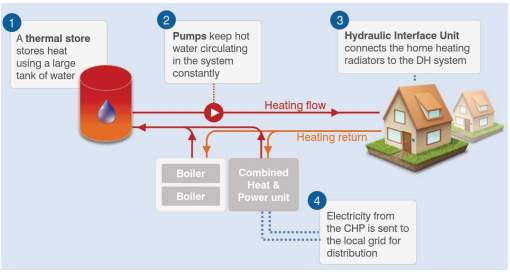
Figure 2:8 the basic concept of district heating
District heating is a network providing heat, usually in form of hot water, the heat is mainly used for space heating and for domestic hot water (drinkable water); however, It usually also meets some industrial needs. District heating systems can serve whole cities; when a system is limited to a group of buildings it is referred to as block heating. The main advantage of these systems is that the large district heating plants are more efficient, more economic and create less pollution than decentralized fossil fuel based boilers. The heat generated in a centralized manner is then distributed to urban areas through a system of pipelines specially designed for transporting heat which is then supplied house to house.
3 Research methods
3.1 Introduction
To further the understanding of the problem and the development of the most suitable solution, the following chapter was done. Different research methods were implemented which include survey, observation, questionnaire, internet research (journals), interviews and engineering tools. Data collection methods helped in discovering and gaining information, and the details are described below.
3.2 Data collection
Quantitative and qualitative (exploratory) methods of collecting the data were employed to gather as much needed data as possible. The methods are briefly described at below. Data was gathered from both primary and secondary sources.
3.3 Primary sources
3.3.1 Interviews
In order to collect adequate information about the bits of the project interviews were done in person, on the phone and through emailing. People from the construction industry, energy regulation departments and water works formed the majority of the interviewees. This helped to extract useful information on different aspects and requirements of the project.
3.3.2 Questionnaires
Questionnaires were also used in the gathering of information. Home water users were the main target for this method. Things like their daily water consumption and the amount they are required to pay for the water were part of the crucial questions asked. The information acquired helped in the prediction of the acceptability of the projects and different views also helpful suggestions were noted down through informal questioning and discussions.
3.3.3 Meta-analysis
This included the collection of and statistical analysis of analysis of the results obtained from multiple individuals for the reason of integrating the results. This gave advantage over limited resources in case of attempting to do experiments.
3.4 Secondary sources
For the purpose of comprehending time, cost and effort data was gathered from secondary sources.
3.4.1 Previous research
Much information was obtained based on the work that other researchers have done. Many concepts, experiments, statistics etc. outlined by many different researchers were compiled to come to a common ground.
3.4.2 Official statistics
The government has a vast data base containing valuable information about some important considerations for instance population increase, utility demand curves etc. these helped in the prediction of the design capacity of the system.
3.4.3 Government reports
From time to time the government releases information about challenges faced in the nation. These reports shows the areas which need attention and have been addressed.
3.4.4 Internet
This was vastly utilised in the research for the project. Multiple sources including software, research papers, communication (interviews) among many others were done through the internet.
3.4.5 Library research
3.4.6 Engineering tool
These are the tools which were utilised to enhance the minimization of time to complete the project. They provided quick results by simulation, alteration at design drawings stage, easy and smart presentation of work. All these helped to avoid producing a product that will not work hence avoid extra costs and time lose.
3.4.7 Microsoft office
Microsoft office package proved to be very useful in the documentation of the project steps and representation of work. Of particular interest are:
3.4.8 Excel spreadsheet:
Played a crucial role in the data analysis. It provides a user friendly platform to come up with tables, charts and graphs for the purposes of easy presentation and data comparison.
3.4.9 Microsoft word
All the documentation was compiled into or done by the use of Microsoft word. It made presentation of work more accessible and less confusing. Equations were also easily put up by the help of the software.
3.4.10 Microsoft Visio
Tables and flow diagrams presented in this project were done by the use of Microsoft Visio.
Microsoft PowerPoint:
For the purposes of doing power point presentation which includes the summarized project from the proposal stage, progress report and final capstone presentations Microsoft power point was employed.
3.4.11 Autodesk inventor
This software was applied in this project because of its multiple abilities to reduce and predict the functionality of the prototype before actual implementation. It was used extensively for coming up with possible solution drawings and working drawing. The nature of stresses acting on the tarmac surfaces and the pipes was also analysed using finite element analysis package of this inventor.
3.4.12 AFT Mercury
Applied flow technology (AFT) software tool was used in the sizing of pipes and ducting systems in order to reduce cost. It provided a spectacular betterment to the conventional design process, AFT Mercury was used for:
- Automatically sizing piping, ducting, pumps, valves and other components to achieve cost goals
- Provides a comprehensive approach to identify low cost design of real world systems that is rarely practical with traditional methods due to the large number of variables and constraints involved
- Provides the power of informed decision making when developing a low cost system design
3.4.13 AFT Fantom
AFT Fathom fluid mechanics simulation software was used to calculate pressure droppage and flow dispersion in liquid and ducting systems, its implementation helped in
- Evaluating heat transfer in pipes and heat exchangers
- Simulating System operation and component interaction
- Troubleshooting the designed system to determine the cause of functional failures.
- simulating individual system elements and their interaction
- integrating equipment features, output and analysis with system’s diagrammatic presentation
- Significantly adds to the quality of systems engineering that can be achieved, resulting in more efficient, less costly and more dependable piping systems
3.5 Conclusion
The chosen methods proved to provide a quiet good in depth understanding of the nature and focus of the project. Useful data was gathered efficiently and the engineering tools applied gave a well desirable outcome.
4 Results and discussion
4.1 Introduction
From the field research done a number of conclusions were drawn about the product’s feasibility and acceptance. Some weaknesses were noted and also platform to note areas where the product may need improvement was given to the people who were involved. The product was fully explained to the people approached before being interviewed or given questionnaires.
4.2 Questionnaire findings
4.2.1 End user perception
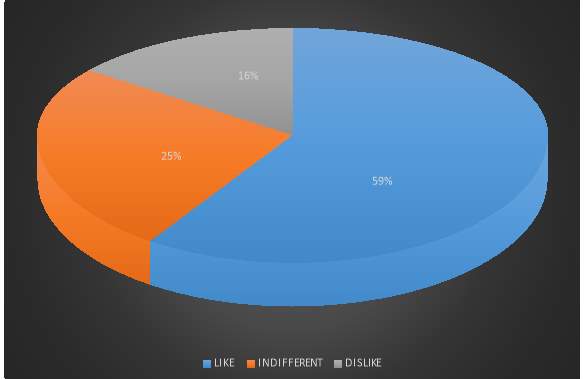
Figure 4:1: Pie chart showing the percentages of the people’s perception about the product
From the chart it can be seen that the majority of the people who managed to fill the questionnaire were either indifferent or had positive attitude towards the implementation of the product. However from the data gathered 90% of the people showed concern and some elements of doubt about the availability of water utilities. The country has been having serious shortages of water supply and this brought an element of mistrust in the end users who were approached.
4.2.2 Average hot water consumption per day
From the research conducted by form of questionnaires the results were extracted and tabulated in the bar graph below. The highest consumption was noted to be bathing followed by washing. The most need for hot water was around 6:00am to 7:00am and the reasonable cause of such a high demand would be preparation for work and school. Also demand would rise from 6:30pm to around 9:00pm during dish washing and after work bathing.
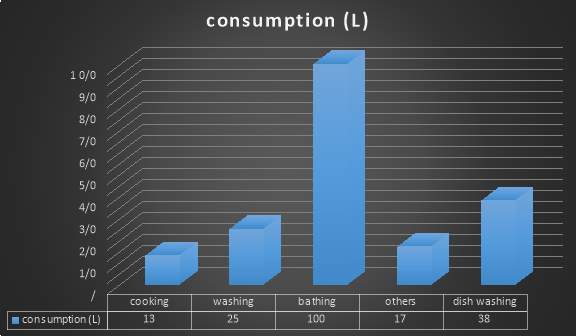
4.3 Experimental results
The results tabulated in this section have been obtained from the research and analysis done by other people and also the student did some tests and computer analysis to see how different parameters affect the performance of the proposed tarmac heat surface collector. It was found that the efficiency is affected by pipe diameter, pipe depth, pipe spacing, weather conditions and pipe length, the in-depth analysis of these factors are outlined below. Also of particular interest was the behaviour of the system due do external forces like traffic loading, the analysis was done to see how this affects the integrity of the system.
4.3.1 Comparison Of Different Material Properties
Table 4‑1 mechanical properties of different materials
| material | Conductivity | Strength |
| PVC | ||
| COPPER | ||
| ASBESTORS | ||
| IRON | ||
4.3.2 Effect Of Changing Pipe Diameter
From the study carried out it was found that larger diameter of the pipes tends to increase the time required to gain heat. The graph in the figure below shows the quantitative effects of bigger pipe diameter. Varying the pipe diameter from 15mm to 75mm as shown the smallest diameter indicated the highest change in temperature increasing the diameter to 25m resulted in 50% droppage of heat energy. From this it can be deduced that larger pipe diameters provide high performances in reducing the surface temperature but results in low energy gain.
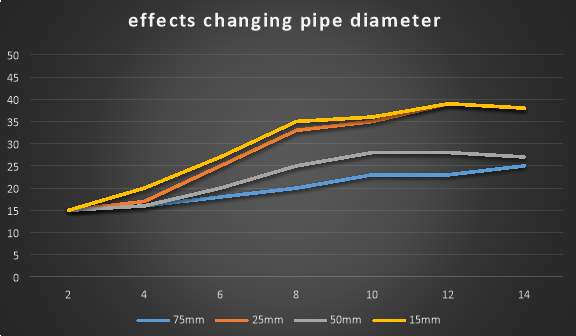
Figure 4:3 effects of changing pipe diameter
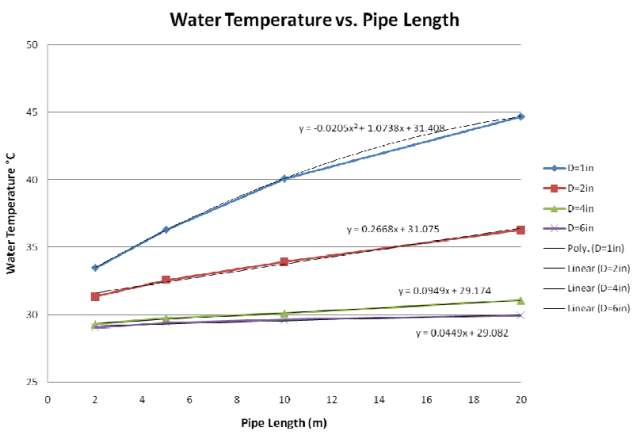
4.3.3 Effect Of Changing Pipe Spacing
The figure above shows the quantitative variation in the temperature with respect to pipe spacing. Of particular interest is the gradient of the curve with change in the spacing. Smaller gaps between pipes from 0 to about 0.6m have a steeper gradient. The figure below shows the results of a thermal analysis of pointing the variation of heat as shown in red, it can be deduced that larger spacing encourage higher temperatures to be achieved due to lack of heat absorbing matter which in this case is water, Though this may seem advantageous and likable there still needs to be struck a balance between wasting energy and gaining high temperatures.
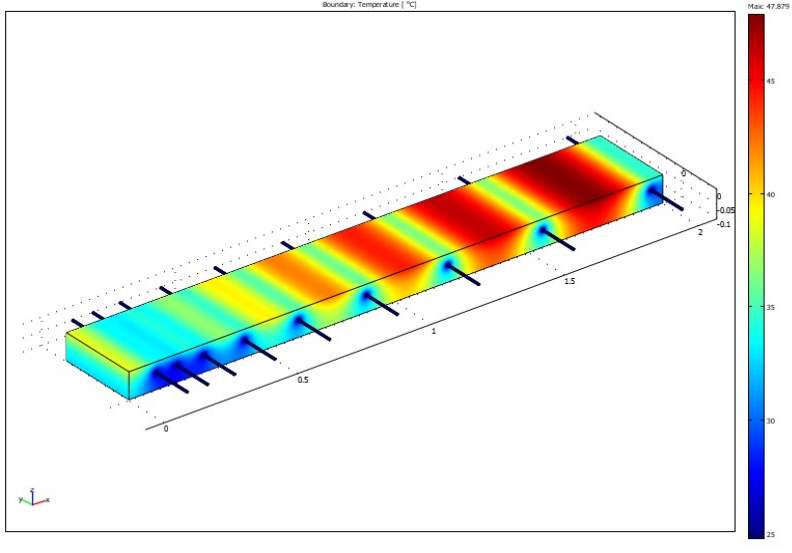
Figure 4:4 thermal analysis showing effects of pipe spacing
Towards the left end of the figure the big red gaps shows energy that is being wasted. In the middle the pipe spacing is 100mm and proved to have the same temperature as the spacing in the far right yet still more pipes can be put in the same area hence it was concluded that a spacing of 100mm is the most economic.
4.3.4 Effect Of Changing Fluid Velocity
The fluid velocity determines how much time the fluid will spend in the pipes hence the amount of energy that the water can gain. As shown below increasing the fluid velocity results in low energy gain. The effect was observed from varying the velocity from 0.1m/s to 2.0m/s and the effect was noted to be similar to that of changing pipe diameter. Significant increase in water temperature occurred between 0.1 and 0.5m/s. at velocities greater than 0.25m/s the system stops to be efficient.
4.3.5 Effect Of Changing Pipe Depth
Based on the figure below it was noted that reducing the depth from 755mm to 25mm increased the temperature gain by about 60%. Highest values of temperature are observable between 25 to 15mm. on both occasions the time required to attain the maximum possible temperature which in this case is 3 hours did not differ.
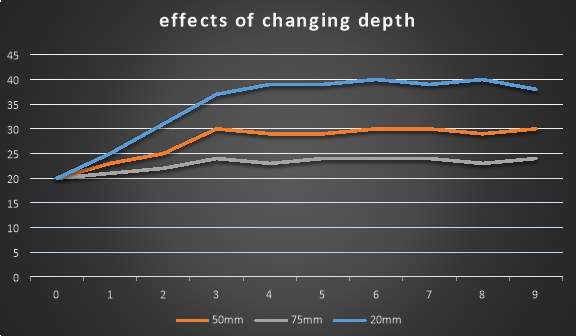
Figure 4:5 effects of altering pipe depth
4.3.6 Load Analysis
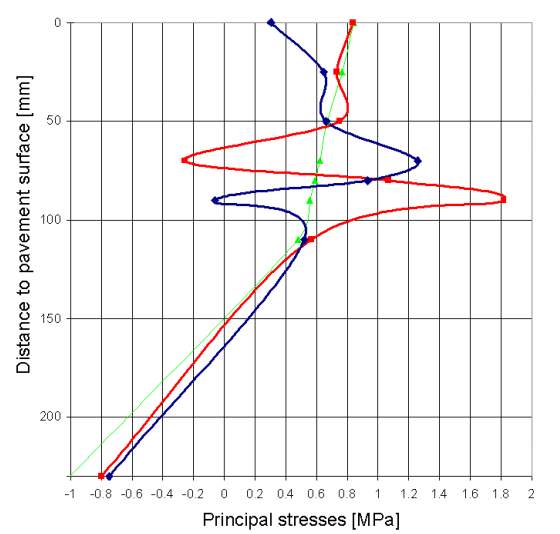
Figure 4:6 showing variation of principal stresses with depth obtained from innovation in the production and commercial use of energy extracted from asphalt pavements by C. Sullivan et al 2007.
Introducing pipes underneath tarmac pavement has got a tendency of reducing its strength hence may lead to a shorter life span of the road. This problem has been tackled by using comparatively soft tarmac mixture, which is capable of resisting cracks due to concentration of stresses. By first putting the 3D interlocking grid crack formation and growth is reduced. This softer mix may face the problem of permanent deformation due to high temperatures but the water in the tubes act as a condenser cooling the surface of the tarmac. With this at hand the system can be designed to withstand the expected loading.
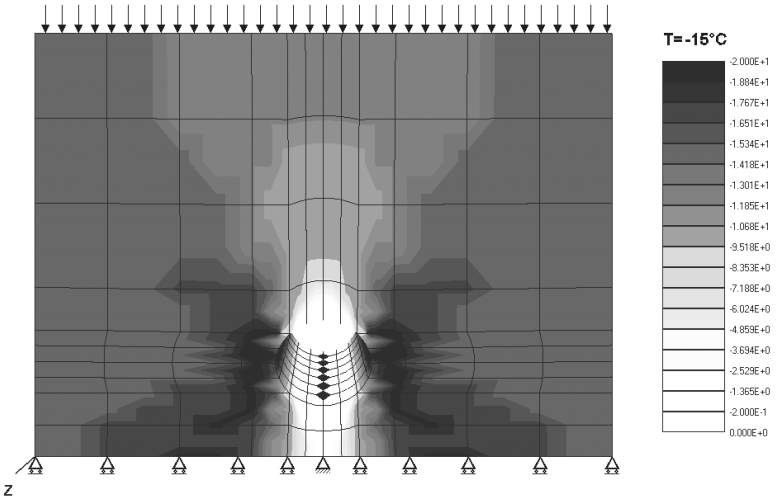
Figure 4:7 vertical stresses on the surface of tarmac
In the figure above graphical representation of stresses is shown. There is a development of a stress path diagonally protruding from the pipes to the sides of the specimen. It can be noted that there are low stresses below and above the tube, the pipe itself carries little load. Principal stresses were calculated from the shear and orthogonal stresses. It can be observed that principal stresses are 55% higher than average vertical stresses. At the highest temperature we observe highest stresses as shown by table 4-2 below.
4.3.7 Finite Element Result Analysis
Table 4‑2 showing results from FEA at different temperatures
| Temperature | 20
℃ |
38
℃ |
| Fmax(kN
) |
-38.6 | -8.51 |
| Principal tensile stress (MPa) | 1.45 | 0.70 |
| Principal compressive stress (MPa) | -6.34 | -1.70 |
| Average vertical stress (MPa) | -4.60 | -1.12 |
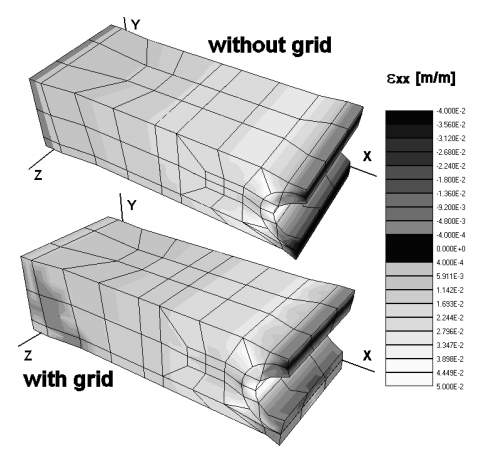
The figure above shows that the presence of a 3-D grid assists in reducing the strain on the water pipes. It is no secret that the insertion of pipes under the tarmac forms stresses and strains with peak values around the tube in a complex distribution. The result is the weakening of the tarmac surface and thereby reducing its lifetime. The road energy system reinforcing grid helps in confining tarmac and reducing stresses around the tubes. The major advantage with our road system is that they are flexible so flexibility together with the grid will reduce greatly the effects of stress.
4.4 Conclusion
The findings from the research done gave a clearer view on the feasibility of implementing the project. Different aspects that need special attention were looked into.. The grid is proved to be very effective in lowering strains it should also be noted the pipe spacing, pipe diameter and embedment depth have a critical role in the efficiency of the system and should therefore be taken into account when designing the system.
5 CONCEPT GENERATION AND DESIGN
5.1 CONCEPT GENERATION
5.2 Introduction
The concepts developed in this project were all natured around a phenomenon arrayed in the figure below. The idea was to generate heat energy by employing the concept of heat transfer from tarmac surface to the pipe then to the water. The concepts were chosen that would involve these set of heat transfer procedures
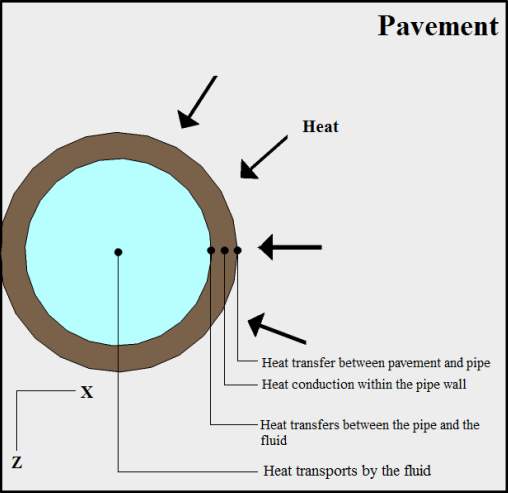
Figure 5:1Heat transfer from pavement to working fluid within the pipe, Adapted from Enhancing Pavements for Thermal Applications
5.3 Design Brief
Table 5‑1 tarmac surface heat collector design guidelines
| mission statement: tarmac surface heat project | |
| product description | Tarmac surface heat exchanger |
| primary market | Urban area homes |
| Assumptions | Average family of 5
Each person uses an average of 30L/day |
| economic goals | reduce the water heating energy consumption by 25%
improve lifetime of roads |
5.3.1 Quality Function Deployment
The research carried out gave numerous views and needs of customers. There is need to clearly specify these needs and evaluate the product capability in meeting these needs. The house of quality matrix was used to for the process of transferring the customer voice into a product.
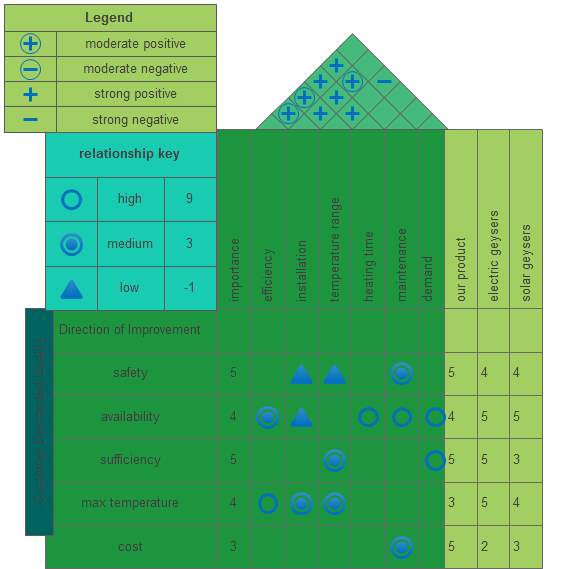
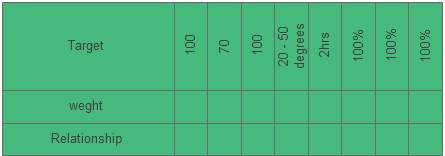
Figure 5:2 customer need evaluation
5.3.2 Concept one
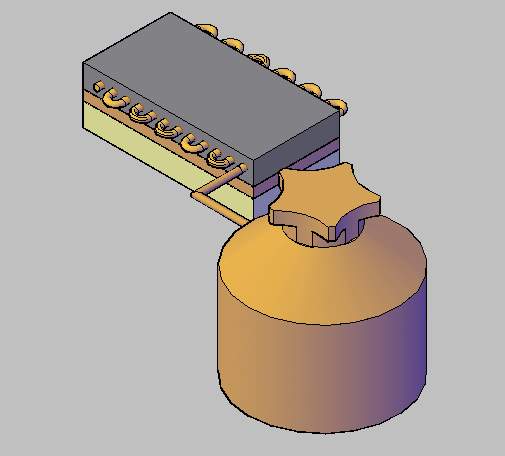
Advantages
- The storage tank allows for supply even in bad weather
- There is uniform distribution of heat as it is supplied from a tank
- The collector pipes are protected by the top tarmac surface hence last a bit longer.
- Installation is simple.
Disadvantages
- The storage tank is an extra cost
- Storage tank may reduce the temperature of the water
5.3.3 Concept two

Advantages
- The storage can be used when there is low solar, bad weather or nights
- There is a certain natural insulation provided by the lower section of the tarmac on the storage pipes.
The collector pipes are protected by the top tarmac surface hence last a bit longer.
Disadvantages
- Burying the collector pipes reduces the maximum absorption that could be achieved.
- The storage pipes are prone to heat losses, they reduce the efficiency of the system.
- It is more expensive to implement due to the digging required for storage pipes.
- More resources and skill required for assembly.
5.3.4 Concept three
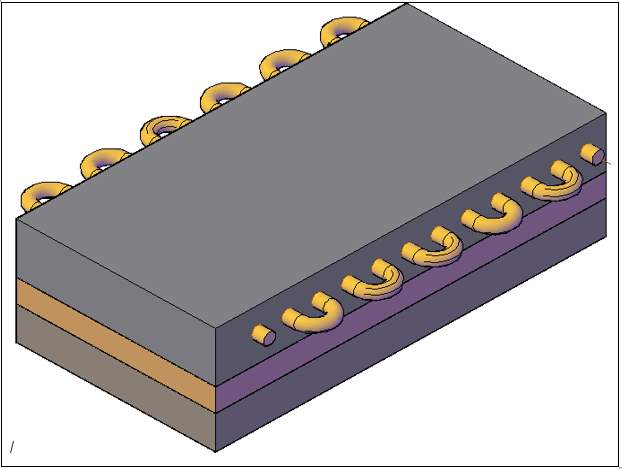
Advantages
- The pipes are protected by the top layer hence less susceptible to damage.
- Cheap and straight forward to install.
- Easier maintenance costs.
Disadvantages
- May weaken the strength and reduce the lifetime of the road surface.
- There is no storage water for use when there is low or no solar during nights and bad weather.
- Heat distribution may not be uniform within the tubes
5.4 Concept selection
To give detailed weighting to the design considerations the concept scoring Table(See table 5-3 below) was used. The positives (+) are the most outstanding strengths required for the best design and the negatives shows the weaknesses within the three concept the zeros are in between.
| Criteria | concept one | concept two | concept three |
| insulation efficiency | + | + | + |
| Accessibility | 0 | – | 0 |
| Storage | + | + | 0 |
| Absorption rate | + | + | + |
| Durability | 0 | + | – |
| Positives (+’s) | 3 | 4 | 2 |
| Negatives (-‘s) | 0 | 1 | 1 |
| Zeros (0s) | 2 | 0 | 2 |
| net score | 1 | 3 | -1 |
| Rank | 2 | 1 | 3 |
| Decision | Continue | Continue | Reject |
From the selected concepts the concept screening table shown below was used to give a more quantitative weighting the criteria. The highest scoring concept is the better option to further improve into a product that the customer needs.
| Criteria | weight | concept two | concept one | ||
| Rating | weighted score | Rating | weighted score | ||
| Absorption rate | 45% | 4 | 1.8 | 4 | 2.25 |
| insulation efficiency | 25% | 3 | 0.75 | 3 | 0.50 |
| Ease of Storage | 5% | 3 | 0.2 | 5 | 0.1 |
| Durability | 15% | 4 | 0.6 | 4 | 0.15 |
| Accessibility | 10% | 3 | 0.3 | 5 | 0.5 |
| total score | 100% | 3.65 | 3.50 | ||
| Rank | 2 | ||||
| Decision | Reject | Continue | |||
5.5 DESIGN CALCULATIONS
The first law of thermodynamics also known as the law of conservation of energy, states
that energy cannot be destroyed or created but can only be transformed from one state to another. For any system or process there must exist an energy balance which is expressed as the net change in total energy that enters and exits the system. In this design chapter factors which comprise the energy balance of the tarmac surface are analysed quantitatively with the aim of coming up with a functional design. Shown below is the energy balance diagram extracted from (banks 2008). The water distribution system is also sized and necessary factors are analysed and calculated in order to serve the selected location.
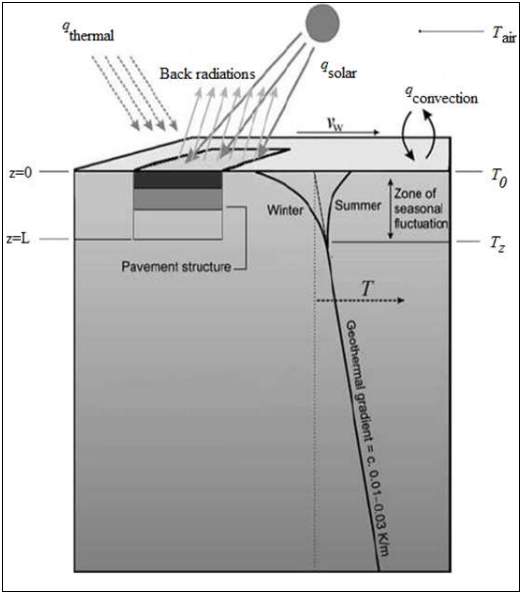
Figure 5:6energy balance of the tarmac surface heat collector system enhancing pavement energy systems.
5.6 Energy That Can Be Harvested From The Tarmac Surface
5.6.1 Ridgeview roads Tarmac surface area
Length of network = 12870m
Width of road = 3m
Total surface = 3(12870)
= 38 610
m2
5.6.2 Solar radiation absorbed by pavement
qs=aS_paveqi…………………….Equation 5‑1
Where
aS_pave- Absorptivity of pavement which is taken as 0.9W
m-2
qi
– The incident solar radiation which varies with cloud cover taking a daily average to be
6081 Wh/m2/day
qs=0.90 (6234)
=5610.6 Wh/m2/day
5.6.3 Thermal radiation emitted by the asphalt
qr=σ×ϵpaveT4pave sur-T4air…………………Equation 5‑2
qr
=emitted radiation
T4air
– Air temperature in kelvins.
T4pave_sur
-pavement temperature in kelvins.
σ
Is Stefan Boltzmann constant =
5.68×10-8W/(m2K4)
ε
Is the emissivity of the material = 0.81 for tarmac
qr=5.68×10-8×0.81(45-30)
=1.32×10-5 Wh/m2/day
5.6.4 Thermal radiation absorbed from the atmosphere
qa=σϵatmT4sky………………….Equation 5‑3
qa=5.68×10-8×0.91×30
=1.57×10-5 Wh/m2/day
5.6.5 Total energy that can be harvested
Q= qa+ qs- qr…………………Equation 5‑4
=5472.9+1.57×10-5-1.32×10-5
=5610.6 Wh/m2/day
5.6.6 Energy required to raise water by 20 degrees Celsius
Q=m.cp.T2-T1…………………Equation 5‑5
Q=173700 000×4.2(20)
= 1.46
×1010J
IN Wh/
m2/day
=
1.46 ×10103600×1000
= 4 053 Wh/
m2/day
5.6.7 Actual energy that can be harvested
η
-the efficiency of the heat exchanger.
A
-surface area of the tarmac.
η=outputinput…………………..Equation 5‑7
=40535473.
=74%
Qa=5610.6×38 610×0.74
=160 420 647 kWh/day
5.6.8 Heat conduction through the pavement
qn=-Knconc∂T∂n………………Equation 5‑8
Where
∂T∂nis the temperature gradient in n direction (K/m)
Knconc is the conductivity of asphalt layer which is between 0.74 and 2.06
qn=-1.56(3520)
=-2.73 W/(mK)
5.6.9 Heat conduction through the pipe
qn=-Knpipe∂T∂n…………………Equation 5‑9
Knconc is the Conductivity of pipewhich is between 1.86
qn=-1.86(3520)
qn=-3.26 W/(mK)
5.6.10 Heat convection between water and pipe
qc=h̅water pipeASTpipe-Twater…………………Equation 5‑10
h̅water pipe Is convection coefficient between the water and pipes
= 0.73
As
– Surface area of pipe
As=π(12870)+π(0.025)2
= 80865
m2
qc=0.73(80865)(20-39.2)
=
1.13MJ
5.6.11 Heat convection between the pavement surface and the ambient
qc=h̅paveampASTamp-Tpave…………………….Equation 5‑12
Tpaveamp is the
Convection coefficient between the pavement surface and the ambient between 17 and 22.5
qc=18.1 ×AS(31-30)
qc=18.1 ×80865(31-30)
= 1.46 MJ
5.7 Design For Water Demand
5.7.1 Assumptions
A house hold is comprised of 5 people.
Peak demand is when people are bathing in the morning between 6 and 7 am.
Each person requires 20L of water for bathing.
At peak hour each household has at most one person using the water.
5.7.2 Hot water usage allocation
Table 5‑5 showing the water allocation for domestic use
| USE/HOUSEHOLD | QUANTITY/ DAY |
| Bathing | 100L |
| Dishes | 50L |
| Washing | 43L |
| Total | 193L |
5.7.3 Maximum Water Demand/day
MWD = number of houses
×total quantity/day
600
×193= 115800L
Assuming a factor of safety to be 1.5
Demand 1.5
×115800L=173700L
5.7.4 Supply flow rate
=
17370060= 2895L/m
5.7.5 Collector Pipe length that can be installed
Parameters
Tarmac width = 3m,
Tarmac length = 12 870m
Collector pipe spacing = 100mm along the surface
Number of parallel pipes is given by
length of tarmac surface distance between pipes……………….Equation 5‑14
=
3000mm100mm
= 30 lines
5.7.6 Total length of collector pipes (
LC)
LC=
Number of parallel pipes
×length of the tarmac
30
× 12870=4500m
= 386100m
5.7.7 Volume capacity of collector pipes
V=π×0.0252×386104=189.53m3
1
m3=1000 litreshence volume in water is 0.2ML
The amount water running in tubes at any given time is greater than daily demand hence the system is well able to support the chosen location.
5.8 Storage Tank Capacity And Specifications
Length = 9m
Width = 6
Depth = 4
Volume = 216
m3
5.9 Determination Of Pump Size
5.9.1 Velocity of water (v)
Q = flow rate through the pipe (
m3/sec)
A = pipe cross sectional area
A= π(0.1)24
A= 0.0079m2
v= 0.048250.0079
v= 6.10ms-1
5.9.2 Loss coefficient (K).
K= KFITTINGS + KPIPE,………………..Equation 5‑18
Kfittings = loss due to fittings pipe works
KPIPE
= loss due pipe
Table 5-6 shows the sum of losses associated with transfer of water from storage to end user.
Table 5‑6 loss coefficient parameters
| FITTING ITEM | QUANTITY | FITTING LOSS VALUE | ITEM TOTAL |
| BENDS | 12 000 | 0.75 | 8000 |
| PIPE ENTRANCE | 1 | 0.05 | 0.05 |
| Kfittings TOTAL | 8000.05 |
Kpipe= fLD……………………..Equation 5‑19
f = friction coefficient
L = pipe length (m)
D = pipe diameter (m)
f=0.25logε3.7D+ 5.74Re0.9)2…………………Equation 5‑20
Re
= Reynolds number
ε
= roughness factor
Re= vDμ……………………..Equation 5‑21
μ
= Kinematic viscosity
Re= 6.10(0.1)0.00000131
Re= 4.66×105
From Equation 5‑20
f=0.25log0.0015×10-33.7(100×10-3)+ 5.74(4.66×105)0.9)2
f=0.0135
From Equation 5‑19
Kpipe= 0.0135(12870)50×10-3
Kpipe= 1735.90
From Equation 5‑18
K= 8000.005+ 1735.90
K= 9735.89
5.9.3 Total head
Htotal
Htotal= Hs+ HD………………………Equation 5‑22
Hs
= Static head = 2m
Dynamic head HD
(m)
K = loss coefficient
v = velocity in the pipe (m/sec)
g = acceleration due to gravity
HD= 9735.89(6.10)22(9.81)
=18.46×103m
5.9.4 Pump power required
P= Q×H×g× ρpump efficiency………………Equation 5‑24
ρ
= 1000kg/
m3
P= 0.04825×3.45×105×9.81× 10000.85
=10.3MW
5.10 Design For Load Strength Of Collector Pipes
The legally specifications of vehicles permitted on the Zimbabwean roads are
Weight = 560 000N
Width = 2.6mm
Length = 18 000mm
These have been taken to be maximum parameters that the design should be able to withstand. Copper is a good heat conductor even with thickness, the conductance per thickness is almost constant. The figure below shows the design consideration due to the force exerted by the trucks single wheel and was used to approximate the load experienced by the buried pipes.
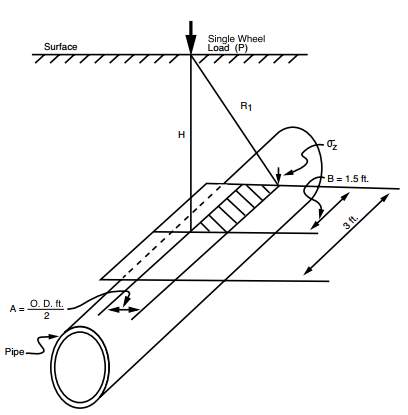
Figure 5:8 load distribution
5.10.1 Area Taking the Weight (A)
A=2600×18 000
A=46 800 000mm2
Truck load (
Pt N/mm2)
Pt=RF×CPbD
Where
Pt = Truck load in pounds per square inch
R = Reduction factor
F = Impact factor =1.5 (ASCE Manual No. 37)
C = Surface load factor. (C150/A21.50)
P = Wheel load (N)
b = Effective pipe length of 0.91m
D = Outside diameter of the pipe
Surface load factor (C) can be calculated from
=1-2πsin-1HA2+H2+1.52A2+H21.52+H2+2π1.5AHA2+H2+1.521A2+H2+11.52+H2
H = Depth of cover in meters
A = Outside radius of the pipe in meters
=1-2πsin-10.0020.0252+0.0022+1.520.0252+0.00221.52+0.0022+2π1.5(0.002)(0.025)0.0252+0.0022+1.5210.0252+0.0022+11.52+0.0022
= -23.32
Therefore truck load
Pt=1.5R×-23.32(7257.48)0.9144(0.025)
=111.05 Mpa
The calculated value of truck load is below the yield strength of copper-nickel alloy C71500 employed in this project which is 125MPa hence the pipes will not undergo permanent deformation.
5.11 Design summary
5.12 Conclusion
6 ENGINEERING COST ANALYSIS
6.1 Introduction
The financial viability of the project was assessed using profitability indicators such as Return on investment (ROI), payback period (PP), break even analysis and the net present value (NPV). Total costs are divided into direct and indirect costs. Direct costs include costs of equipment, equipment installation costs, piping installation, and cost of service facilities. Indirect costs include engineering and supervision construction costs and cost of contingency.
6.2 Direct Costs
6.2.1 Equipment cost
Table 6‑1 showing the cost equipment
| Material | Quantity | Unit Cost($) | Total Costs($) |
| Copper pipes | 12870m | 7.4/6m | 95 238.00 |
| Pipe fittings | 12 000 | 0.5 | 6 000 |
| 3D grid | ——— | 8340 | 8340 |
| Storage tank | 1 | 21000 | 21000 |
| Total | 130 578.00 |
6.2.2 Cost estimation for central heating
Table 6‑2 showing the estimation of cost for central heating
| Description | Cost ($) |
| installing purchased equipment, 30%E | 39 173.40 |
| Pumping, 15%E | 19 586.70 |
| Infrastructure development and services, 18%E | 23 504.00 |
| Total | 82 264.10 |
Total direct cost = 82 264.10+ 130 578.00
= $212 842.10
6.3 Indirect Cost
Table 6‑3 showing indirect costs
| Engineering and supervision, 33%E | 43 090.74 |
| Contractors fee, 21%E | 27 421.38 |
| Contingency, 35%E | 45 702.30 |
| Total indirect cost | 116 214.42 |
6.4 Total Fixed Capital
Fixed capital = direct cost + indirect cost
= 116 214.42+ 212 842.10
= $329 056.52
6.5 Working Capital
Table 6‑4 showing the working capital for the project
| Maintenances | 20 000 |
| Labour | 12 000 |
| Miscellaneous | 3 000 |
| Total | 35 000 |
6.6 Total Capital Investment Costs
This is the total estimated money needed to start the project.
Total Capital investment cost = fixed costs + working capital
= 329 056.52+ 35 000
= $364 056.52
6.7 Sales Revenue
Average Daily demand = 115800L
Average annual demand = 42 295.95 ML
Taking cost of 1000L of hot water to be = $4.2
Annual revenue = $4.2(42 294 792)
= $143 806.23
6.8 Time Value Of Money
Table 6‑5 showing the NET PRESENT VALUES analysis
| period (years) | ||||||
| 0 | 1 | 2 | 3 | 4 | 5 | |
| earnings($) | 177642.99 | 177642.99 | 177642.99 | 177642.99 | 177642.99 | |
| costs | (364,056.52) | 35000.00 | 35000.00 | 35000.00 | 35000.00 | 35000.00 |
| profit($) | 142642.99 | 142642.99 | 142642.99 | 142642.99 | 142642.99 | |
| discount factor | 1.0000 | 0.9091 | 0.8264 | 0.7513 | 0.6830 | 0.5645 |
| present values ($) | 129675.45 | 117886.77 | 107169.79 | 97427.08 | 80518.25 | |
| Summation of PV($) | (364,056.52) | 532,677.33 | ||||
| NPV | 168,620.81 | |||||
NPV = $168,620.81
6.9 Discounted Payback Period
Table 6‑6 showing discounted payback period
| present values | 129675.4455 | 117886.7686 | 107169.7896 | 97427.08148 | 80518.24916 | |
| costs | (364,056.52) | (234,381.07) | (116,494.31) | (9,324.52) | 88,102.57 | |
| Period(Yrs.) | 1 | 2 | 1.15 |
Payback period = 2 years 2 months
6.10 Break Even Analysis
BE= TOTAL FIXED COST CONTRIBUTION MARGIN
CONTRIBUTION MARGIN=SELLING PRICE-VARIABLE COST
= 4.2 – 0.82
= 3.40
BE= 364 056.52 3.4
= 107 075.45
m3
Which is equivalent to 2 years 5 months or $449 716.89
Cost of installing roads international standards
Cost of heating with electricity
6.11 Life Cycle Assessment
7 Conclusion and recommendations
7.1 Recommendations
APPENDIX A: MAP OF RIDGEVIEW HARARE
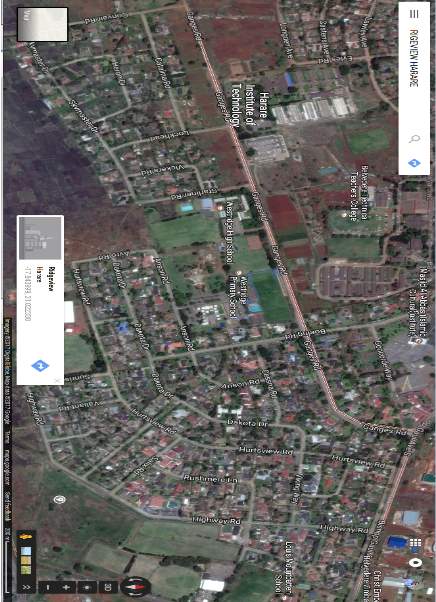
Figure 5:7: map showing the supply area
APPENDIX B: WORKING DRAWINGS
APPENDIX C: QUESTIONAIIRE
APPENDIX D: GANTT CHART

APPENDIX E: INSTALLATION INSTRUCTIONS
REFERENCES
- García, A, & Partl, M 2014, ‘How to transform an asphalt concrete pavement into a solar turbine’, Applied Energy, 119, pp. 431-437.
- Guangxi, W, & Xiong, Y 2012, ‘Thermal Energy Harvesting System to Harvest Thermal Energy Across Pavement Structure’, International Journal Of Pavement Research & Technology, 5, 5, pp. 311-316.
- Androjić, I, & Alduk, Z 2016, ‘Analysis of energy consumption in the production of hot mix asphalt (batch mix plant)’, Canadian Journal Of Civil Engineering, 43, 12, pp. 1044-1051.
- Klein, G 2005, ‘National Impact of Hot Water Distribution System Losses in Residences’, ASHRAE Transactions, 111, 2, pp. 423-429.
- Kurek, W, & Ostfeld, A 2013, ‘Multi-objective optimization of water quality, pumps operation, and storage sizing of water distribution systems’, Journal Of Environmental Management, 115, pp. 189-197.
- Gupta, R, Remadevi Nair, A, & Ormsbee, L 2016, ‘Leakage as Pressure-Driven Demand in Design of Water Distribution Networks’, Journal Of Water Resources Planning & Management, 142, 6, pp. 1-14.
- Pan, P, Wu, S, Xiao, Y, & Liu, G 2015, ‘A review on hydronic asphalt pavement for energy harvesting and snow melting’, Renewable & Sustainable Energy Reviews, 48, pp. 624-634.
- Pascual-Muñoz, P, Castro-Fresno, D, Serrano-Bravo, P, & Alonso-Estébanez, A 2013, ‘Thermal and hydraulic analysis of multilayered asphalt pavements as active solar collectors’, Applied Energy, 111, pp. 324-332.
- Tang, N, Wu, S, Chen, M, Pan, P, & Sun, C 2014, ‘Effect mechanism of mixing on improving conductivity of asphalt solar collector’, International Journal Of Heat & Mass Transfer, 75, pp. 650-655.
- O’Hegarty, R, Kinnane, O, & McCormack, S 2016, ‘Review and analysis of solar thermal facades’, Solar Energy, 135, pp. 408-422
- Shaopeng, W, Mingyu, C, & Jizhe, Z 2011, ‘Laboratory investigation into thermal response of asphalt pavements as solar collector by application of small-scale slabs’, Applied Thermal Engineering, 31, 10, pp. 1582-1587.
- Guldentops, G, Nejad, A, Vuye, C, Van den bergh, W, & Rahbar, N 2016, ‘Performance of a pavement solar energy collector: Model development and validation’, Applied Energy, 163, pp. 180-189.
- Chen, M, Wu, S, Wang, H, & Zhang, J 2011, ‘Study of ice and snow melting process on conductive asphalt solar collector’, Solar Energy Materials & Solar Cells, 95, 12, pp. 3241-3250.
- D’Antoni, M, & Saro, O 2012, ‘Massive Solar-Thermal Collectors: A critical literature review’, Renewable & Sustainable Energy Reviews, 16, 6, pp. 3666-3679.
- Ozgener, O, & Ozgener, L 2015, ‘Modeling of driveway as a solar collector for improving efficiency of solar assisted geothermal heat pump system: a case study’, Renewable & Sustainable Energy Reviews, 46, pp. 210-217.
- Rert, R 2001, ‘Principles of Solar Engineering (Book Review)’, Civil Engineering (08857024), 71, 8, p. 86,
- Oliet, C, Pérez-Segarra, C, & Oliva, A 2008, ‘Thermal and Fluid Dynamic Simulation of Automotive Fin-and-Tube Heat Exchangers, Part 2: Experimental Comparison’, Heat Transfer Engineering, 29, 5, pp. 495-502,
- Vehrencamp, J.E., 1953. Experimental investigation of heat transfer at an air‐Earth interface. Eos, Transactions American Geophysical Union, 34(1), pp.22-30.
- Zalba, B., Marı́n, J.M., Cabeza, L.F. and Mehling, H., 2003. Review on thermal energy storage with phase change: materials, heat transfer analysis and applications. Applied thermal engineering, 23(3), pp.251-283.
- Wu, G. and Yu, X., 2012. Thermal energy harvesting across pavement structure. In Transportation Research Board 91st Annual Meeting (No. 12-4492)
- A Pilot Study for Investigation of Novel Methods to harvest Solar Energy from Asphalt Pavements
- Dehdezi, P.K., Hall, R.M. and Dawson, A., 2011. Thermo-Physical Optimisation of Specialized Concrete Pavement Materials for Surface Heat Energy Collection and Shallow Heat Storage Applications.
- Van Bijsterveld, W.T. and De Bondt, A.H., 2002. Structural aspects of asphalt pavement heating and cooling systems. In Proceedings of 3rd international symposium on 3d finite element modelling, Design & Research.
- Banks, D., 2012. An introduction to thermogeology: ground source heating and cooling. John Wiley & Sons.
- Hermansson, Å 2004, ‘Mathematical model for paved surface summer and winter temperature: comparison of calculated and measured temperatures’, Cold Regions Science & Technology, 40, 1/2, pp. 1-17.
- Van Bijsterveld, W.T. and De Bondt, A.H., 2002. Structural aspects of asphalt pavement heating and cooling systems. In Proceedings of 3rd international symposium on 3d finite element modelling, Design & Research.
- Hepbasli, A., 2010. A review on energetic, exergetic and exergoeconomic aspects of geothermal district heating systems (GDHSs). Energy Conversion and Management, 51(10), pp.2041-2061.
Cite This Work
To export a reference to this article please select a referencing stye below:
Related Services
View allRelated Content
All TagsContent relating to: "Technology"
Technology can be described as the use of scientific and advanced knowledge to meet the requirements of humans. Technology is continuously developing, and is used in almost all aspects of life.
Related Articles
DMCA / Removal Request
If you are the original writer of this dissertation and no longer wish to have your work published on the UKDiss.com website then please:




